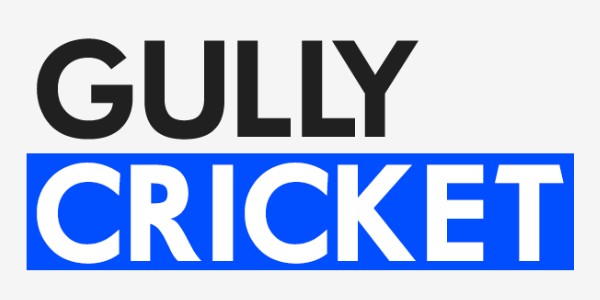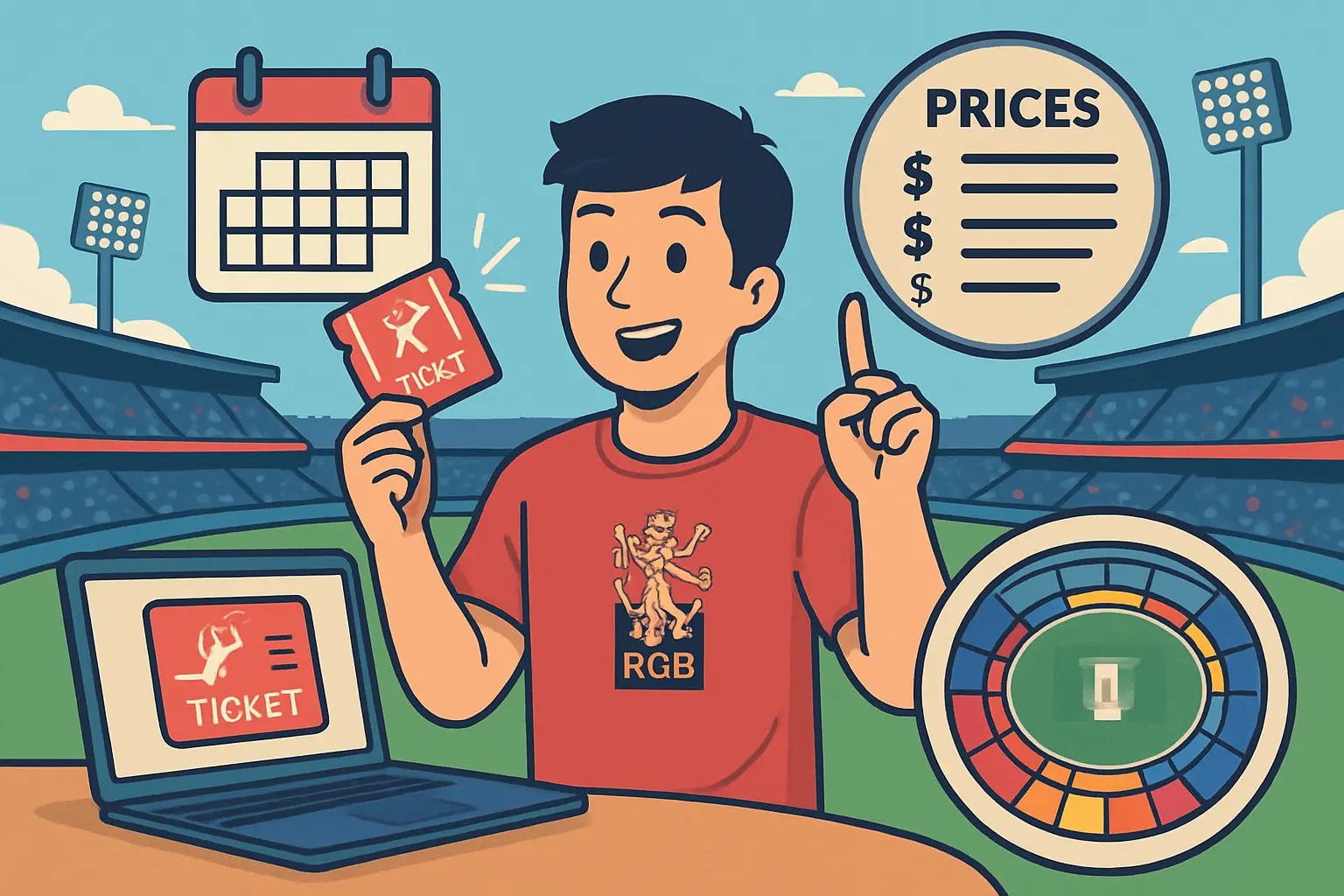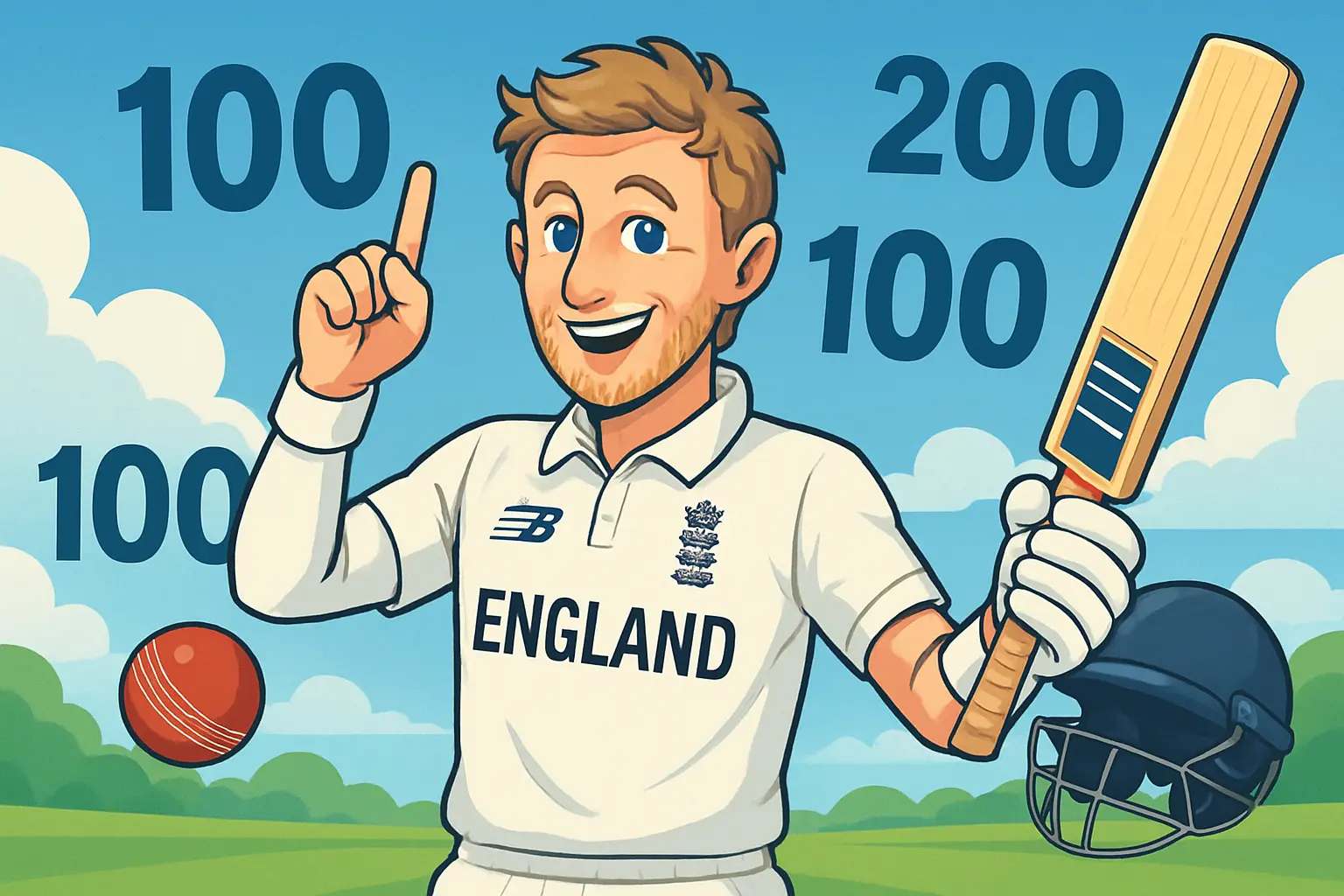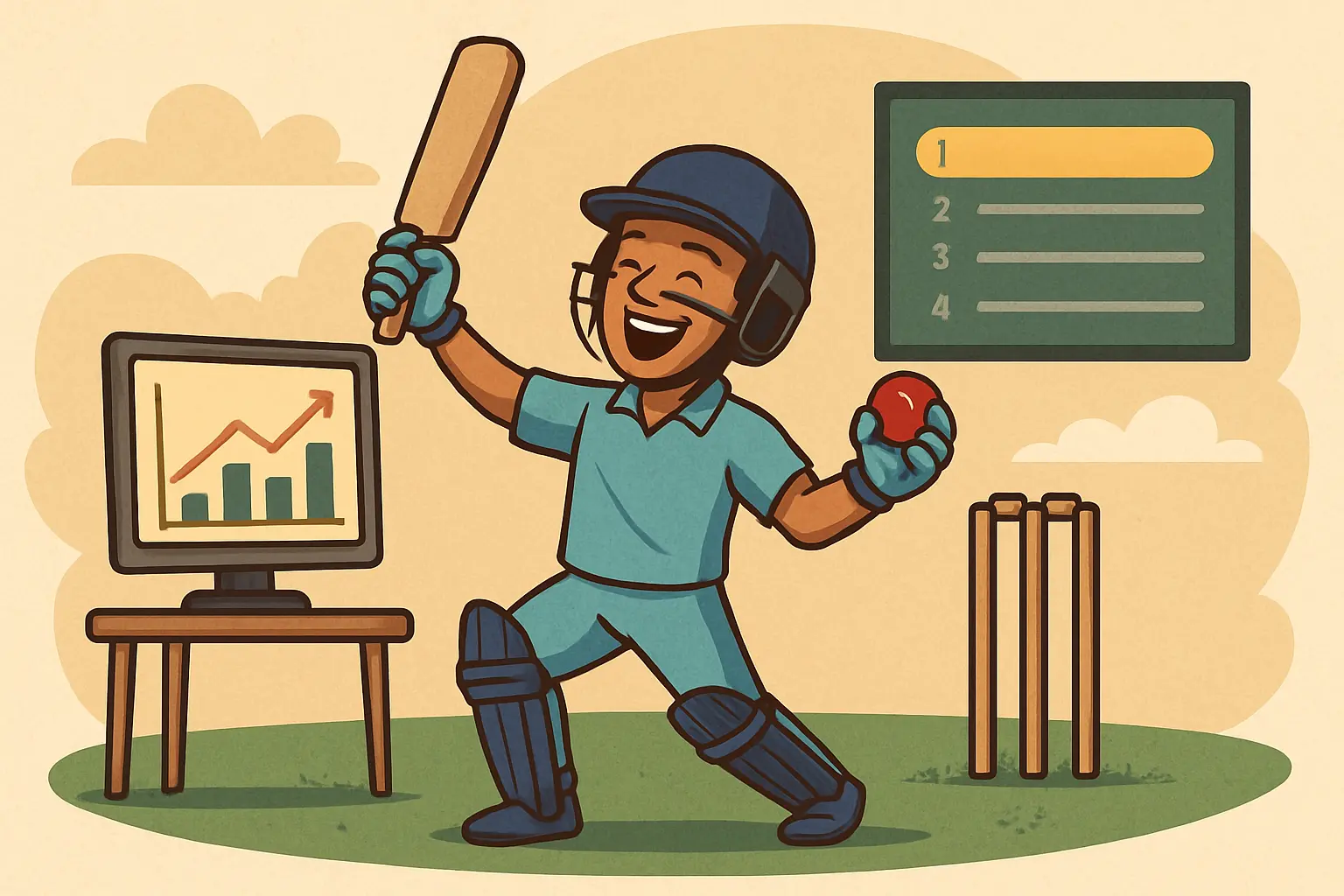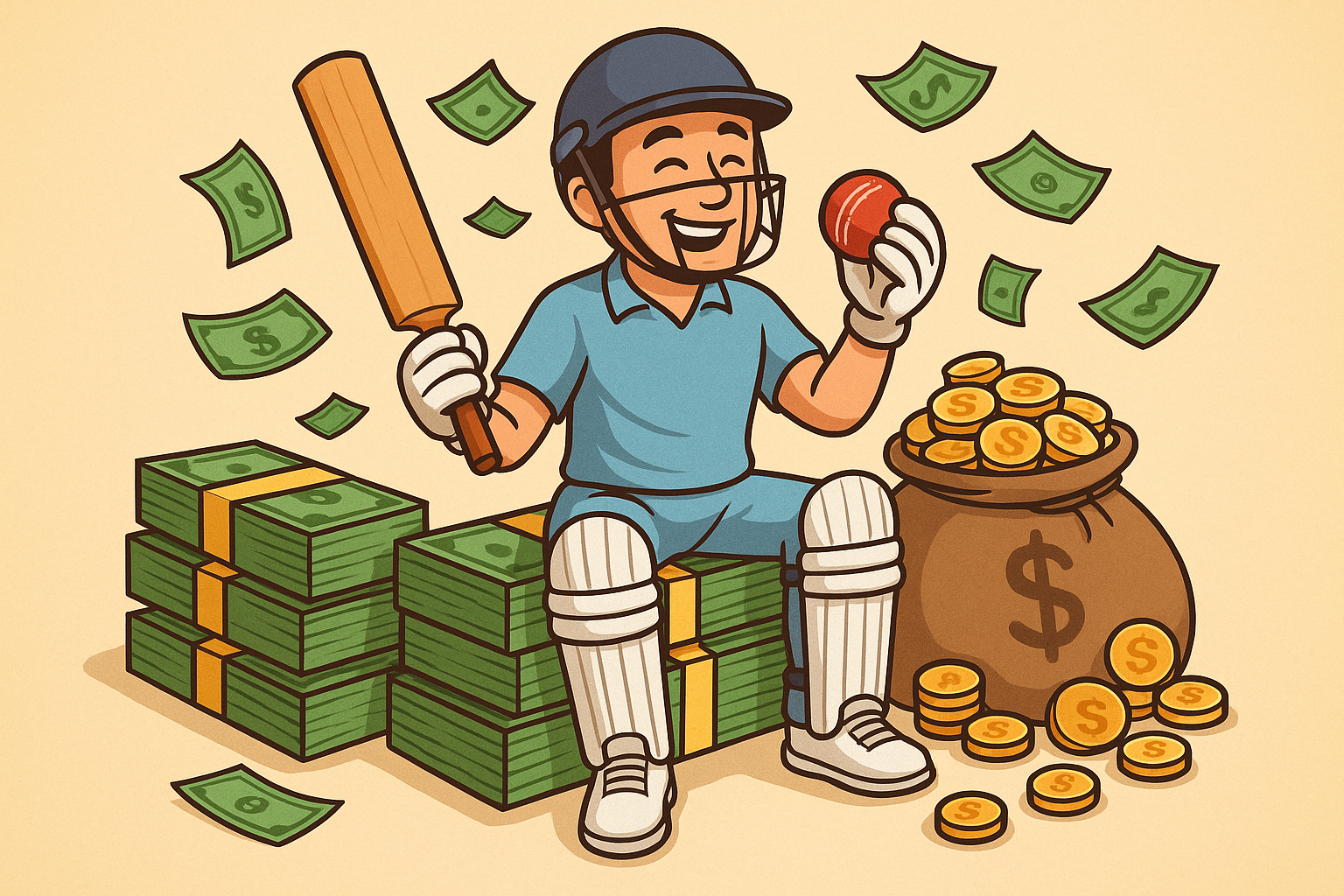
Quick Answer
- • No. 1 richest cricketer in the world: Sachin Tendulkar
- • Estimated net worth range: USD 170–200 million (roughly INR 1,400–1,650 crore)
- • Basis: Lifetime endorsements, business holdings (SRT Sports, stakes in sports franchises), licensing and royalties, properties, and a decades-long global brand
This assessment uses verifiable salary disclosures, published brand deals, company filings where available, and well-established public reporting. Ranges reflect the fact that net worth is a moving target.
How this ranking is calculated
Cricketer wealth is a mosaic, not a single paycheck. To cut through recycled lists and wild guesses, this piece applies a transparent framework built from sports business reporting and the realities of cricket economics.
What’s included
- Central contracts and match fees: BCCI, ECB, Cricket Australia, and other board retainers and per-match incomes
- Franchise salaries: IPL, PSL, BBL, CPL, SA20, The Hundred, and WPL
- Endorsements and appearance fees: Multi-year brand contracts, bat sponsorships, TV ads, social campaigns
- Equity and businesses: Stakes in apparel lines, sports franchises, academies, restaurants, tech, and consumer brands
- Royalties and licensing: Signature lines, autobiographies, documentable licensing deals
- Real estate and financial investments: Where publicly reported or disclosed through filings and reliable media
What’s excluded
- Rumored or unverified assets
- Private family wealth not tied to the player’s earnings
- Illiquid or speculative holdings not grounded by documentation
Currency and ranges
- USD estimates are provided with INR equivalents using a recent average of 1 USD ≈ INR 83 for directional context only.
- Ranges reflect tax, exchange-rate shifts, performance bonuses, and fluctuating endorsement pipelines.
Update cadence
- Reassessments after IPL and WPL auctions, fresh central contracts, large endorsements, major investment disclosures, and at regular intervals to keep the list current.
Top 10 richest cricketers in the world
Table: Ranked list with estimated ranges, primary income sources, and profile notes
-
1) Sachin Tendulkar
- Estimated net worth: USD 170–200 million (INR 1,400–1,650 crore)
- Country: India
- Status: Retired
- Income mix: Endorsements (long-term), licensing and royalties, SRT Sports Management, sports franchise stakes, properties
- Notes: The rare cricketer who transcended eras. His brand never really dimmed; it matured. Legacy deals and licensing carry meaningful annual value even after retirement.
-
2) Virat Kohli
- Estimated net worth: USD 140–180 million (INR 1,160–1,500 crore)
- Country: India
- Status: Active
- Income mix: BCCI central contract and match fees, IPL retention, endorsements, equity stakes (fashion, food, health), personal labels (One8 x Puma, Wrogn)
- Notes: The most valuable cricket brand. Consistent performance in all formats combined with an A-list commercial profile across apparel, fintech, edtech, and premium consumer goods.
-
3) MS Dhoni
- Estimated net worth: USD 120–150 million (INR 1,000–1,240 crore)
- Country: India
- Status: Retired internationally; active in franchise cricket
- Income mix: IPL contract, endorsements, production ventures, stakes in sports teams, lifestyle brand (SEVEN)
- Notes: A cult figure whose trust factor with brands is almost unmatched. A shrewd investor, careful with public appearances yet omnipresent in the Indian sports economy.
-
4) Ricky Ponting
- Estimated net worth: USD 70–95 million (INR 580–790 crore)
- Country: Australia
- Status: Retired
- Income mix: Coaching, commentary, long-term endorsements, corporate partnerships, property
- Notes: A premier voice in the game and a reliable presence for Australian and global brands. The transition from captain to coach and media has been commercially effective.
-
5) Jacques Kallis
- Estimated net worth: USD 60–75 million (INR 500–620 crore)
- Country: South Africa
- Status: Retired
- Income mix: Coaching assignments, long-time sponsorships, property, investments
- Notes: One of the few cricketers whose on-field all-round brilliance translated into post-retirement stability. Coaching roles in multiple T20 leagues added steady, high-value income.
-
6) Sourav Ganguly
- Estimated net worth: USD 50–75 million (INR 415–620 crore)
- Country: India
- Status: Retired
- Income mix: Broadcasting, endorsements, corporate roles, administrative stints, property
- Notes: The “Prince of Kolkata” continues to monetize the authority and charisma forged during India’s rise in the early T20 era. Boardroom presence amplified his commercial cachet.
-
7) Shane Warne (estate)
- Estimated net worth: USD 45–60 million (INR 375–500 crore)
- Country: Australia
- Status: Deceased; estate holdings
- Income mix: Endorsements, business ventures, media, property
- Notes: Warne’s commercial footprint—spanning commentary, fashion tie-ins, hospitality, and gaming—left a sizable estate still referenced in wealth rankings.
-
8) Virender Sehwag
- Estimated net worth: USD 40–55 million (INR 330–455 crore)
- Country: India
- Status: Retired
- Income mix: Commentary, endorsements, academies, digital media presence
- Notes: The voice is as distinctive as the batting once was. A social media powerhouse with a thriving academy ecosystem and broadcast roles.
-
9) Rohit Sharma
- Estimated net worth: USD 35–50 million (INR 290–415 crore)
- Country: India
- Status: Active
- Income mix: BCCI contract, IPL retention, endorsements (premium global and Indian brands), investments
- Notes: Captained at every level and converted it into top-tier brand partnerships. A measured, premium image helps him command sizable annual endorsement retainers.
-
10) Yuvraj Singh
- Estimated net worth: USD 35–45 million (INR 290–375 crore)
- Country: India
- Status: Retired
- Income mix: Endorsements, foundation and brand partnerships, entrepreneurial ventures, T20 league stints
- Notes: A global icon of resilience. The survivor narrative, combined with a charitable foundation and enduring popularity, keeps his brand strong.
A few names just outside this tier
Sunil Gavaskar, Kapil Dev, Rahul Dravid, AB de Villiers, Chris Gayle, Kieron Pollard, Andre Russell, Kumar Sangakkara, Mahela Jayawardene, Ben Stokes, Steve Smith, David Warner, Pat Cummins, Glenn Maxwell, Mitchell Starc, Kane Williamson
Richest active vs retired cricketers
Richest active cricketer
Virat Kohli leads the active list. Beyond match fees and IPL income, his endorsements stretch from premium athleisure and watches to tech-enabled lifestyle brands. He has embraced equity-based partnerships rather than pure cash endorsements in numerous cases, pushing long-term wealth.
Richest retired cricketer
Sachin Tendulkar remains the gold standard. His name sits across multi-generational licensing and he holds measured stakes in sports institutions. The brand is stewarded carefully—limited public appearances, high selectivity, and licensing that continues to sell to new fans.
Richest female cricketer and the rise of the WPL
Women’s cricket now has a real commercial flywheel. The Women’s Premier League, international central contracts, and visible global tournaments have turned elite players into household names. Endorsement confidence, once tentative, is now mainstream.
- Smriti Mandhana: The highest-paid WPL player with a salary around INR 3.4 crore, paired with Indian and global endorsements. Estimated net worth sits in the USD 5–7 million range, making her one of the richest female cricketers worldwide.
- Harmanpreet Kaur: Captaincy profile and consistent franchise demand, USD 3–5 million.
- Ellyse Perry: The most recognizable Australian women’s cricketer with long-standing deals, USD 4–6 million.
- Alyssa Healy, Natalie Sciver-Brunt, Meg Lanning, Sophie Devine: Net worths cluster in the USD 2–5 million band, aided by WPL, The Hundred, and national contracts.
Table: Leading women cricketers and indicative ranges
- Smriti Mandhana — USD 5–7m; WPL salary and endorsements
- Ellyse Perry — USD 4–6m; cross-market endorsements and leadership value
- Harmanpreet Kaur — USD 3–5m; captaincy premium and WPL
- Natalie Sciver-Brunt — USD 3–5m; all-rounder utility and UK commercial pull
- Alyssa Healy — USD 3–4m; wicketkeeper-batter profile with broad appeal
- Meg Lanning — USD 3–4m; iconic captaincy legacy and media roles
- Sophie Devine — USD 2–3m; all-rounder impact across leagues
Richest cricketer in India
The Indian market drives cricket’s global economy. With unmatched broadcast rights, the IPL, and a brand ecosystem that dwarfs most sports territories, Indian players dominate the global net-worth list.
- Sachin Tendulkar remains the richest cricketer in India overall.
- Virat Kohli stands as the richest active Indian cricketer.
- MS Dhoni, Rohit Sharma, and former captains like Sourav Ganguly form the next tier with diversified revenue streams across endorsements, ownership, and showpiece league contracts.
Highest paid IPL players and the costliest signings
The IPL remains the single-biggest salary engine in cricket. Central contracts pay the bills; the IPL builds fortunes.
Highest auction prices achieved
- Mitchell Starc — INR 24.75 crore
- Pat Cummins — INR 20.50 crore
- Sam Curran — INR 18.50 crore
- Cameron Green — INR 17.50 crore
- Ben Stokes — INR 16.25 crore
- Yuvraj Singh — INR 16.00 crore (among the earliest marquee figures)
Big-ticket retentions have also matched or exceeded many auction deals over time, with elite Indian captains and marquee batters holding retainer values in the INR mid-to-high teens.
Endorsement engines and brand value in cricket
Cricket’s endorsement structure borrows from football and basketball. Top players negotiate a mix of cash retainers and equity, often linking payouts to performance or campaign milestones. Social reach contributes: a cover drive sells, but so does a clean Instagram grid and high trust with family audiences.
- Virat Kohli: The sport’s most bankable endorser. Multi-category deals (athleisure, beverages, foods, fintech, education, automobiles, personal care) with a visible tilt toward premium perception. Known to take equity in challenger brands.
- MS Dhoni: The ultimate “trust” ambassador. Frequently cast in family-first messaging and financial products, along with tech-enabled consumer brands.
- Rohit Sharma: A premium positioning with footwear, apparel, and team-centric affinity.
- Rohit, Hardik Pandya, KL Rahul, and Jasprit Bumrah: All carry significant endorsement portfolios, though more concentrated domestically than Kohli’s.
- Internationally, Ben Stokes, Joe Root, Steve Smith, David Warner, Pat Cummins, AB de Villiers, and Chris Gayle headline brand rosters in their home markets and in India-adjacent campaigns.
Kohli vs Dhoni vs Tendulkar net worth
- Sachin Tendulkar maintains the top slot by total net worth when you account for licensing longevity and low public overexposure that preserves brand value.
- Virat Kohli leads among active players and is widely considered the most valuable athlete brand in cricket.
- MS Dhoni sits close behind, with exceptional longevity in endorsements and ongoing IPL income.
Indicative ranges with INR conversions
- Tendulkar: USD 170–200m (INR 1,400–1,650 crore)
- Kohli: USD 140–180m (INR 1,160–1,500 crore)
- Dhoni: USD 120–150m (INR 1,000–1,240 crore)
Richest by country
India
- Top names: Sachin Tendulkar, Virat Kohli, MS Dhoni, Rohit Sharma, Sourav Ganguly, Virender Sehwag, Rahul Dravid, Kapil Dev, Yuvraj Singh
- Drivers: IPL salaries, unmatched endorsement market, investments into sports-tech, apparel, and franchise ownership
Australia
- Richest: Ricky Ponting, Shane Warne (estate), Steve Smith, David Warner, Pat Cummins, Glenn Maxwell, Mitchell Starc
- Drivers: National contract stability, IPL and BBL incomes, English summer league stints, media and coaching roles
England
- Richest: Ben Stokes, Joe Root, Jos Buttler, Kevin Pietersen, Andrew Flintoff
- Drivers: ECB central contracts, The Hundred, sponsorships activated across the UK, IPL contracts for white-ball stars, television and publishing
South Africa
- Richest: Jacques Kallis, AB de Villiers, Faf du Plessis
- Drivers: Global T20 leagues, IPL, coaching in multiple leagues, long-standing bat deals
Sri Lanka
- Richest: Kumar Sangakkara, Mahela Jayawardene
- Drivers: Commentary and coaching, board roles, IPL coaching setups, property and hospitality interests
Pakistan
- Richest: Shahid Afridi (retired), Babar Azam, Shoaib Malik
- Drivers: PSL, endorsements within Pakistan and Gulf markets, television and business ventures; note that PSL salaries are structurally lower than the IPL
New Zealand
- Richest: Brendon McCullum, Kane Williamson
- Drivers: IPL, coaching roles (McCullum), The Hundred, brand partnerships with a focus on performance and sustainability narratives
Bangladesh
- Richest: Shakib Al Hasan
- Drivers: National icon status, businesses in food and retail, global T20 leagues including IPL stints
Afghanistan
- Richest: Rashid Khan, Mohammad Nabi
- Drivers: IPL, BBL, PSL, global T20 demand for spin-bowling all-rounders, endorsements in South Asia and the Gulf
West Indies
- Richest: Chris Gayle, Kieron Pollard, Andre Russell
- Drivers: Global franchise circuit, IPL and CPL anchors, performance merchandise, music and media crossovers in select cases
Richest captain in cricket
Virat Kohli holds the richest-captain mantle when considering total net worth among those who have captained extensively in international cricket. MS Dhoni sits close, with Tendulkar—though not defined by captaincy—remaining the overall wealth leader. Rohit Sharma’s portfolio has grown sharply with captaincy and trophy success, pushing him into the upper tier.
Richest batsman, bowler, and all-rounder
- Richest batsman: Sachin Tendulkar, with Virat Kohli second, reflecting the supremacy of batting brands in the sport
- Richest bowler: Shane Warne’s estate; among actives, Mitchell Starc and Pat Cummins lead on peak franchise salaries, with long-term endorsement scope still growing
- Richest all-rounder: Jacques Kallis, followed by Ben Stokes and Shakib Al Hasan in modern-era earning power
How cricketers actually make their money
The engine room of cricket wealth has a distinct rhythm:
- Central contract retainers set a base. In India, the top BCCI category pays a premium; ECB, Cricket Australia, and others offer tier-based structures with match-related fees.
- The IPL changes everything. A single auction can reset a player’s lifetime earnings. For an overseas quick or an Indian top-order bat, one big bid unlocks multi-season compounding through renewed deals and endorsements.
- Endorsements are the multiplier. A marquee Indian cricketer’s endorsement calendar can outstrip on-field income, especially when structured with equity or revenue sharing. For global stars, IPL exposure opens India’s massive consumer market.
- Coaching and commentary extend the curve. Ponting, Kallis, Sangakkara, and Jayawardene demonstrate how post-playing roles compound wealth. English-language commentary broadens reach and longevity.
- Business and equity create lasting value. Athleisure labels, sports franchises, restaurants, fitness-tech, beverages, and venture bets transform seasonal income into long-term assets.
Player mini-profiles
Sachin Tendulkar
The long arc of Sachin’s wealth story is built on stayability. He did not burn through the spotlight; he curated it. Post-retirement, the brand settled into a balanced portfolio: selective endorsements, a presence in grassroots cricket through academies and programs, and commercial stakes in sports properties. Licensing keeps paying—every special-edition jersey, every signed series, every commemorative drop. The key asset is trust stretched across time.
Virat Kohli
This is the most meticulously crafted sports brand in modern cricket. Kohli’s alignment with premium athleisure, performance nutrition, and aspirational lifestyle brands tells you he is not chasing volume but fit. He has also been early to equity deals with high-upside consumer brands, a model borrowed from US sports business. On field, he still outscores rivals; off it, he out-positions them. The combination makes his wealth powerfully compounding.
MS Dhoni
Quiet, precise, effective. Dhoni’s commercial life mirrors his finishing style. He doesn’t sign everything; he signs what makes sense. The IPL keeps him visible, while his investments—sports teams, production companies, and a lifestyle label—create recurring value. In smaller cities and Tier 2 markets, his trust quotient is unmatched, translating into bankable campaigns year after year.
Ricky Ponting
A modern coaching archetype. Ponting’s post-captaincy career stitched together television, commentary, and high-impact coaching roles in the IPL and elsewhere. Add real estate and long-term corporate partnerships, and you have a diversified portfolio that remains resilient regardless of on-field cycles.
Jacques Kallis
A master of consistency turned master of steady income. Coaching assignments across leagues and boards combine with long-term endorsements and property to deliver a durable net-worth profile. He represents the steady middle-path between flamboyance and invisibility—ideal for a long tail of wealth creation.
Sourav Ganguly
Administrative gravitas added to broadcasting earned Ganguly a distinctive place in India’s sporting economy. Board roles brought visibility and, in turn, premium endorsement conversations beyond typical product categories. He remains a popular face in East India and a credible voice nationally, a combination that brands love.
Shane Warne (estate)
Warne’s portfolio was varied, like his bag of tricks. Broadcast, fashion, gaming, hospitality—he enjoyed multiple revenue taps. The estate remains a case study in how a superstar bowler leveraged personality as effectively as performance.
Virender Sehwag
The brutal opener became a digital-age communicator. Sehwag’s voice in Hindi and Hinglish, his commentary style, and his academy footprint have kept him commercially relevant. He lands campaigns that need everyday credibility and a flash of humor.
Rohit Sharma
Rohit’s brand surged as his captaincy stature rose. Endorsements skew premium and long-term, with an easy fit into family-friendly campaigns. IPL captaincy success created a distinct leadership aura that brands are happy to rent.
Yuvraj Singh
The hero of white-ball peaks maintained resonance through a powerful human story. Major brands still associate with his foundation and public persona, and his presence in celebrity T20 events and cricket talk shows secures a steady post-playing flow.
Richest cricket player in the world in USD and in INR
To keep a clean lens, this ranking focuses on USD estimates with parallel INR ranges for India-focused readers. Exchange rates move, so think of INR figures as directional. Here’s a crisp reference for the top three.
- Sachin Tendulkar: USD 170–200m; roughly INR 1,400–1,650 crore
- Virat Kohli: USD 140–180m; roughly INR 1,160–1,500 crore
- MS Dhoni: USD 120–150m; roughly INR 1,000–1,240 crore
Richest IPL player and highest paid ever
The IPL’s top paydays have gone to impact quicks and all-rounders in recent cycles, with a few majestic batting retentions in the same ballpark.
Top auction prices achieved
- Mitchell Starc — INR 24.75 crore
- Pat Cummins — INR 20.50 crore
- Sam Curran — INR 18.50 crore
- Cameron Green — INR 17.50 crore
- Ben Stokes — INR 16.25 crore
Retained giants
Elite Indian batters and captains have been retained in the INR mid-to-high teens, reflecting not just on-field returns but leadership and fan anchor value.
Richest PSL, BBL, SA20, and The Hundred earners
- PSL: Top category fees remain far lower than the IPL. Babar Azam’s overall wealth is driven more by endorsements than PSL alone. Shahid Afridi’s lifetime commercial run keeps him the richest Pakistani cricketer overall.
- BBL: Australian stars supplement Cricket Australia contracts and IPL with BBL appearance fees; Pat Cummins, David Warner, and Steve Smith derive a larger slice from international and IPL incomes.
- SA20 and The Hundred: Strong secondary streams. English and South African stars use these leagues to smooth the calendar and add event-driven bonuses.
Most valuable cricketer by brand value
Virat Kohli remains cricket’s most valuable brand. Multiple independent valuation studies place him among the top athlete brands globally. His social reach, premium positioning, and equity-first approach separate him from peers.
Richest all-time vs richest under 30
- All-time remains anchored by Sachin Tendulkar.
- Under 30, wealth concentration tracks IPL retentions and breakthrough endorsements. Players who become franchise faces early (elite Indian batters, express overseas quicks) pull ahead quickly. The exact names move with form; the structural lesson holds.
Richest retired Indian cricketers
Tendulkar, Dhoni, Ganguly, Dravid, Sehwag, and Kapil Dev lead. Each parlayed cricket excellence into media roles, boardroom influence, academies, or business holdings. The depth of Indian broadcasting and sponsor demand makes even post-playing peaks commercially significant.
Richest cricketer by role and format
- Test-anchored batters often become boardroom and broadcast naturals. Dravid and Ponting are templates.
- White-ball heavyweights monetize more aggressively during peak form through IPL and global leagues.
- Pace bowlers hit the auction jackpot, but lifestyle endorsements skew toward batters and captains.
- All-rounders with passport flexibility (Stokes, Kallis, Shakib) maximize across formats and leagues.
Richest cricketer comparisons without the mythmaking
- Sachin Tendulkar vs Virat Kohli net worth: Tendulkar’s lifetime brand and licensing edge still holds, though Kohli’s upside remains strong through equity stakes and sustained performance.
- Rohit Sharma vs Virat Kohli net worth: Kohli leads on pure commercial muscle; Rohit’s captaincy profile and endorsements keep him in the top cluster.
- MS Dhoni net worth vs Sachin Tendulkar: Dhoni’s modern endorsements and IPL presence push him close, but Tendulkar’s licensing and legacy positioning remain heavier over the long term.
- Who is richer, Kohli or Dhoni: Kohli generally leads among active cricketers; Dhoni remains extremely close when IPL and long-term trust-driven endorsements are tallied.
Methodology details
- Central contracts: Collected from board announcements and reporting by cricket boards and credible national media. These include retainer categories and match fees that vary by format.
- Franchise salaries: Confirmed through IPL auction results and official franchise disclosures where available, along with consistent coverage by top sports-business outlets.
- Endorsements: Estimated using reported deal sizes, campaign counts, and market benchmarks. Long-term signature deals and bat sponsorships are treated separately from one-off campaigns.
- Equity and businesses: Sourced from company registries, press releases, interviews, and credible business media. Valuations are conservative, focusing on reported stakes rather than speculative marks.
- Royalties/licensing: Derived from publishing reports and brand licensing statements; kept conservative due to variability.
- Real estate and investments: Counted only when reported in credible business media or disclosed in filings.
- Taxes and expenses: Net-worth ranges consider that headline salaries are pre-tax and endorsements may be taxed differently. Ranges reflect post-tax realities without presuming exact personal tax planning details.
A deeper look at key earners
The Indian triumvirate
- Tendulkar: Owns the legacy lane. Earnings are predictable and reputation-safe; his name lends itself to institutions rather than fads.
- Kohli: Owns the performance-plus-premium lane. The combination of elite output and aspirational positioning makes him the model for modern athlete wealth.
- Dhoni: Owns the trust lane. An ideal ambassador for financial and tech products where reliability and relatability matter more than flash.
Australia’s high earners
Ponting and Warne showed the blueprint: build a media persona that stands on its own. Today’s generation—Cummins and Starc—ride peak IPL prices, then supplement with thoughtful endorsements. Leaders with policy voices (Cummins on sustainability and social issues) unlock campaign categories others don’t touch.
England’s top tier
Stokes, Root, and Buttler extract value from ECB contracts, The Hundred, and IPL. Ben Stokes’ marquee status after major international performances translates directly into premium endorsements and flexibility clauses.
South Africa and the coaching dividend
Kallis, AB de Villiers, and Faf have leveraged multi-league appeal. The global T20 circuit values experience and calm under pressure; coaching and mentorship expand earning windows even after bat speed wanes.
Sri Lanka’s steady pillars
Sangakkara and Jayawardene turned intelligence into influence, joining commentary boxes and IPL dugouts, then parlaying that gravitas into brand partnerships tailored to leadership and analysis.
West Indies and the carnival of T20
Gayle, Pollard, and Russell embody T20’s traveling show. Their brand is fun, power, and personality, and it still sells. Music videos, merchandise, and pop-culture tie-ins extend reach beyond cricket’s usual lanes.
Bangladesh and Afghanistan
Shakib’s multi-industry presence in Bangladesh is unique in scale for that market. Rashid Khan and Mohammad Nabi represent the modern T20 freelancer perfectly; global league ubiquity makes them household names in multiple regions at once.
Richest cricketers under 30
The new wave watches the IPL auction as intently as the red-ball schedule. The richest under that bracket inevitably includes Indian top-order batters with multi-season retentions and at least one overseas express quick snapped up for a headline sum. Endorsements follow the visibility: regional language ads, digital-first campaigns, and co-branded performance gear. The gap between the top two or three and the rest can be substantial at this age, not because of central contracts, but due to IPL leverage and social reach.
Does IPL salary count toward net worth
Yes. Franchise salaries and bonuses are primary components of a player’s assets after taxes and expenses. For marquee players, however, endorsements and equity often outstrip salary income over time. This is especially true for Indian captains and top batters, who can generate multiple crores per campaign across overlapping brand categories.
Cricketer endorsements and earnings, demystified
- Bat deals: Structured by severity of visibility and form. A player with a long, televised presence in a high-pressure chase can be worth more to a bat sponsor than a sporadic six-hitter with fewer innings.
- Multi-category locks: An athlete might be exclusive with one footwear brand but open in beverages or fintech. Using exclusivity strategically allows higher fee rates.
- Equity vs cash: Younger players often prefer cash early; stars with staying power negotiate equity tranches—Kohli is the standout here.
- Long-term vs seasonal: Long-term deals build predictable annual flow and often come with licensing opportunities.
Richest captain, clarified
- Virat Kohli leads among captains in total net worth today.
- MS Dhoni is close behind, lifted by an IPL presence that keeps renewing his commercial relevance.
- Rohit Sharma, with franchise and national captaincy success, continues to close the gap via leadership premiums on endorsements.
Richest Pakistani, Australian, English, Sri Lankan, and South African cricketers
- Pakistan: Shahid Afridi remains the richest overall on lifetime earnings and brand presence; Babar Azam is the richest active Pakistani cricketer, driven by endorsements as much as match fees.
- Australia: Ricky Ponting remains the richest overall; among actives, Pat Cummins and David Warner headline with a blend of national contracts and IPL amplification.
- England: Ben Stokes leads the present cluster, with Joe Root and Jos Buttler close and diversified.
- Sri Lanka: Kumar Sangakkara edges Mahela Jayawardene; both benefit from commentary and coaching synergy.
- South Africa: Jacques Kallis holds the crown; AB de Villiers follows with a modern, media-savvy brand.
Richest retired cricketer
Sachin Tendulkar. The combination of long-term endorsements, licensing, and institutional brand positioning keeps him ahead of other retired greats. Dhoni, Ganguly, and Ponting are part of the next tier, with slightly different mixes of media, administration, and ownership.
The richest cricketer in the world in rupees and in dollars
For readers who think in rupees, here’s a simple conversion snapshot using USD ≈ INR 83:
- USD 200m ≈ INR 1,660 crore
- USD 150m ≈ INR 1,245 crore
- USD 100m ≈ INR 830 crore
- USD 50m ≈ INR 415 crore
- USD 25m ≈ INR 207 crore
Applying that to the leaders:
- Sachin Tendulkar: INR 1,400–1,650 crore
- Virat Kohli: INR 1,160–1,500 crore
- MS Dhoni: INR 1,000–1,240 crore
What separates the world’s richest cricketers
- Consistency on the field buys negotiating leverage off it. It is easier to sell aspiration than nostalgia.
- Narrative matters. Kohli’s high-performance ethos, Dhoni’s calm reliability, Tendulkar’s timeless aura—all convert into brand premiums.
- Ownership beats one-off paychecks. Stakes in brands, teams, or media enterprises are what preserve wealth after the last match.
- Global leagues increase surface area. A player visible in the IPL, The Hundred, and Big Bash is addressable by more brands in more markets.
Caution on net-worth figures
Players do not disclose net worth publicly. Anyone presenting exact numbers across geographies is guessing. The ranges here are grounded in:
- Board contract disclosures and press reporting on retainers and match fees
- IPL auction results and widely corroborated salary reporting for other leagues
- Publicly reported endorsement deals, many with known fee bands
- Company filings, interviews, brand announcements, and consistent sports-business coverage
- Conservative assumptions on taxation and expenses
Concise table: richest cricketers, active vs retired
Active leaders
- Virat Kohli — USD 140–180m
- Rohit Sharma — USD 35–50m
- Ben Stokes — USD 25–35m
- David Warner — USD 25–35m
- Pat Cummins — USD 25–35m
- Mitchell Starc — USD 20–30m
- Glenn Maxwell — USD 20–30m
- Rashid Khan — USD 15–20m
Retired leaders
- Sachin Tendulkar — USD 170–200m
- MS Dhoni — USD 120–150m (retired internationally; franchise active)
- Ricky Ponting — USD 70–95m
- Jacques Kallis — USD 60–75m
- Sourav Ganguly — USD 50–75m
- Shane Warne (estate) — USD 45–60m
- Virender Sehwag — USD 40–55m
- Kumar Sangakkara — USD 25–35m
- AB de Villiers — USD 30–40m
- Mahela Jayawardene — USD 20–30m
Richest women cricketers and WPL context
The WPL compressed what took men’s cricket a decade to build. Top salaries for women in India now sit in the low single-digit crores, but endorsements are rising fast—especially for players with pan-India recognition or a clean English-language media presence.
- Smriti Mandhana: Highest-paid WPL player, elite endorser in India
- Ellyse Perry: Australia’s most marketable women’s cricketer with strong global crossover
- Harmanpreet Kaur and Alyssa Healy: Leadership and big-match reputations that sponsors value
- Natalie Sciver-Brunt and Meg Lanning: Calm excellence plays particularly well for premium categories
How brand value translates into cash
- Social media impressions shape scope of work and fee. Cricketers with engaged, multilingual audiences secure hybrid deals mixing television and digital.
- Category exclusivity matters. A single long-term apparel anchor can reduce clutter and raise average fee across other categories.
- Performance clauses can lift payouts. Runs and wickets trigger campaign extensions and bonuses.
- Equity-based deals trade near-term cash for long-term upside. Players with patience and aligned narratives benefit disproportionately.
Sourcing and validation
This ranking leans on:
- Cricket boards and national media reporting on contract structures and retainers
- IPL auction results and franchise confirmations
- Multi-season endorsement reporting by sports-business outlets
- Company filings, brand announcements, and investor communications where available
- Athlete interviews and agency statements that reference deal values or structures
- Market benchmarks maintained by brand valuation firms for relative brand strength
Summary and key takeaways
- Sachin Tendulkar remains the world’s richest cricketer on total net worth, sustained by licensing, legacy endorsements, and smart stewardship of a timeless brand.
- Virat Kohli is the richest active cricketer and the sport’s most valuable brand, with an equity-driven strategy that compounds annual earnings.
- MS Dhoni stands close, with trust-led endorsements and ongoing IPL visibility anchoring his portfolio.
- The IPL is the global income engine of cricket. The costliest IPL player titles often go to express quicks and impact all-rounders, but lifetime wealth is still dominated by top-order batters and captains with elite endorsement calendars.
- Women’s cricket is scaling. The WPL has re-based salaries and accelerated endorsement confidence, with Smriti Mandhana leading the pay column.
- By country, India dominates the top wealth tiers, while Australia, England, South Africa, Sri Lanka, Pakistan, New Zealand, Bangladesh, Afghanistan, and the West Indies produce their own top-earning icons driven by IPL, media, and coaching.
A final word on methodology and fairness
Net worth is a living number. Careers twist; brands evolve; new leagues and formats appear. The figures presented here emphasize transparency and conservative ranges. They’re built to be revisited whenever a landmark auction, a fresh central contract, or a headline endorsement resets the market. That is how you treat the business of cricket—with respect for the scoreboard and equal respect for the ledger.
